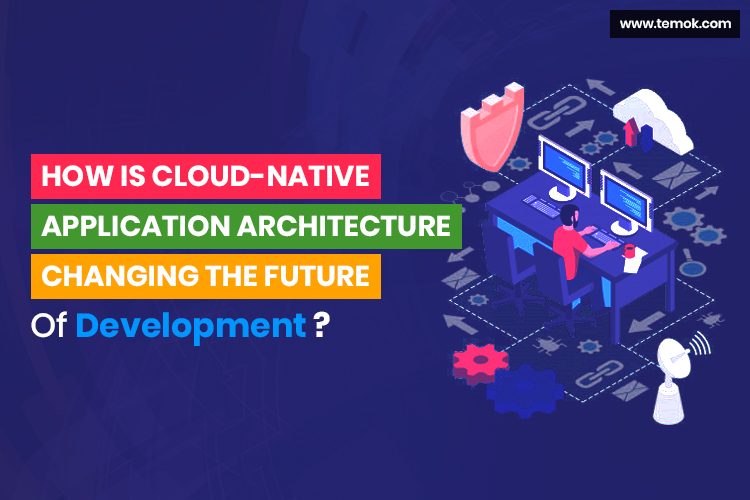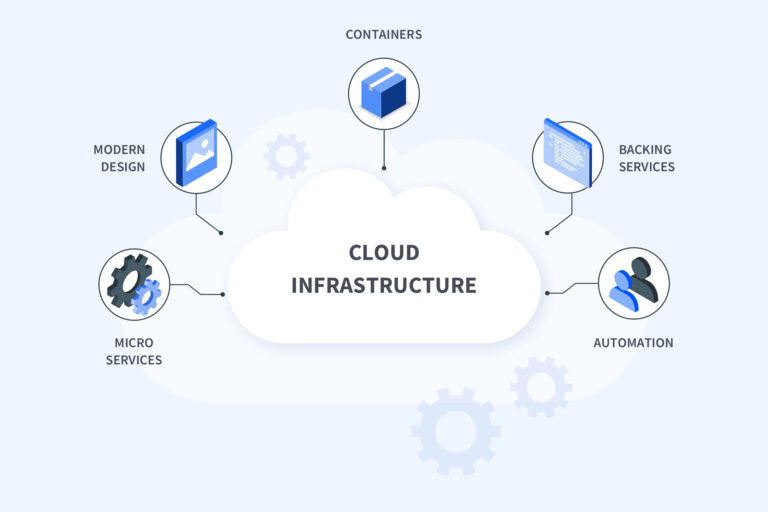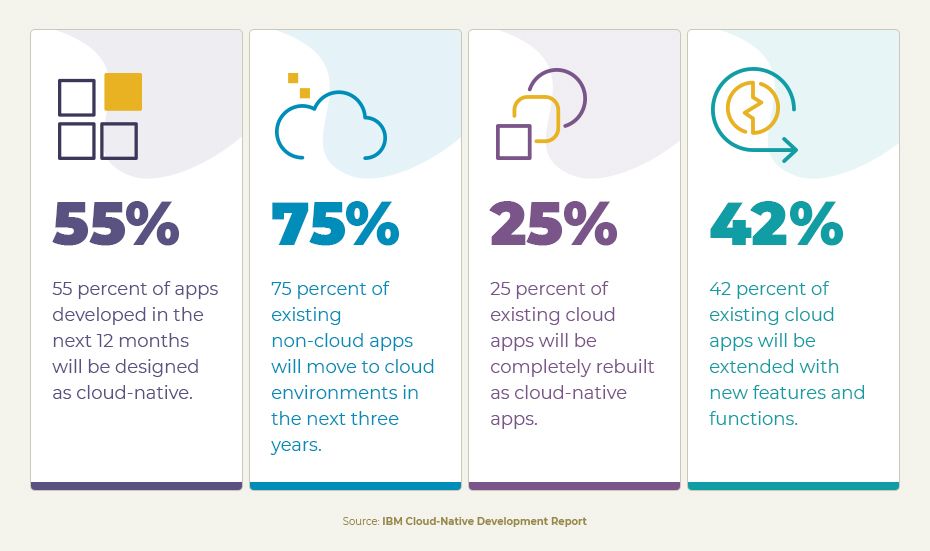The Emergence of Cloud-native Application Development
Cloud-native application development has emerged as a revolutionary approach to software development, leveraging the power and flexibility of cloud computing. This new paradigm has evolved from traditional application development, addressing the challenges of monolithic architectures and providing a more agile, scalable, and resilient solution.
The benefits of cloud-native application development are numerous. First and foremost, it enables organizations to build and deploy applications faster, reducing time-to-market and increasing competitiveness. By breaking down applications into smaller, independent components, cloud-native development facilitates collaboration among cross-functional teams and accelerates the development lifecycle.
Moreover, cloud-native application development offers unparalleled scalability and resource optimization. Applications can automatically scale up or down based on demand, ensuring optimal performance and minimizing resource waste. This elasticity is a significant advantage over traditional architectures, where scaling typically requires manual intervention and can lead to underutilized or overprovisioned resources.
Another key benefit of cloud-native application development is its inherent resilience. By distributing applications across multiple nodes and containers, this approach minimizes the impact of hardware failures, network issues, and other disruptions. Additionally, cloud-native development incorporates advanced recovery mechanisms, such as self-healing and auto-scaling, which further enhance application availability and reliability.
Lastly, cloud-native application development promotes a DevOps culture, breaking down silos between development and operations teams. By encouraging collaboration, communication, and continuous integration and delivery, cloud-native development fosters a more agile and responsive development environment, where changes can be quickly implemented and rolled out to production.

Key Components of Cloud-native Application Development
Cloud-native application development is built upon several core components that enable the creation of scalable, resilient, and agile applications. These components include containers, microservices, and orchestration systems.
Containers
Containers are lightweight, portable, and self-contained execution environments for applications and their dependencies. By packaging an application and its dependencies into a single container, developers can ensure consistent execution across different computing environments, such as development, testing, and production. Containers provide a more efficient and reliable alternative to traditional virtual machines (VMs), as they share the host operating system and require fewer resources.
Microservices
Microservices are an architectural approach to application development that involves breaking down a monolithic application into smaller, independent components or services. Each microservice is responsible for a specific functionality and communicates with other microservices through APIs. This design enables teams to develop, test, and deploy services independently, accelerating the development lifecycle and improving maintainability.
Orchestration Systems
Orchestration systems are essential for managing and scaling containerized applications in production environments. These systems automate the deployment, scaling, and management of containers, ensuring high availability, resource optimization, and fault tolerance. Popular orchestration systems include Kubernetes, Docker Swarm, and Apache Mesos.
Kubernetes
Kubernetes is an open-source container orchestration system that automates the deployment, scaling, and management of containerized applications. It provides features such as self-healing, auto-scaling, and load balancing, ensuring high availability and resource optimization. Kubernetes has gained widespread popularity due to its flexibility, scalability, and extensive ecosystem of tools and plugins.
Docker
Docker is a popular containerization platform that enables developers to create, deploy, and manage containerized applications. Docker provides a lightweight, portable execution environment for applications and their dependencies, simplifying the development and deployment process. Docker Swarm is Docker’s native orchestration system, allowing users to manage and scale containerized applications across a cluster of nodes.
AWS Lambda
AWS Lambda is a serverless computing platform that enables developers to run code without provisioning or managing servers. With AWS Lambda, developers only pay for the compute time consumed, and the platform automatically scales to meet demand. AWS Lambda supports various programming languages, including Python, Node.js, Java, and C#, making it an attractive option for cloud-native application development.

How to Transition to Cloud-native Application Development
Transitioning from traditional monolithic application development to cloud-native development can be challenging but rewarding. By adopting cloud-native application development, organizations can achieve greater scalability, resilience, and agility. This section discusses strategies for transitioning to cloud-native development, including potential challenges and best practices.
Assessing Your Current Application Landscape
Before transitioning to cloud-native application development, organizations should assess their current application landscape. This assessment should include evaluating the complexity, scalability, and maintainability of existing applications. By understanding the current state of their applications, organizations can identify suitable candidates for cloud-native development and prioritize their transition strategy.
Choosing the Right Cloud-native Architecture
Organizations should choose the right cloud-native architecture based on their specific requirements and constraints. This may involve adopting microservices, containers, or serverless architectures. Each architecture has its benefits and limitations, and organizations should carefully evaluate their options based on factors such as scalability, maintainability, and cost.
Addressing Skills Gaps
Transitioning to cloud-native application development often requires new skills and expertise. Organizations should invest in training and development programs to address skills gaps and ensure that their development teams have the necessary knowledge and expertise to design, develop, and deploy cloud-native applications.
Implementing DevOps Practices
Cloud-native application development relies heavily on DevOps practices such as continuous integration, continuous delivery, and infrastructure as code. Organizations should implement DevOps practices to streamline their development and deployment processes and improve collaboration between development and operations teams.
Potential Challenges and Best Practices
Transitioning to cloud-native application development can be challenging, and organizations should be aware of potential pitfalls and best practices. Some common challenges include managing complexity, ensuring security, and maintaining compatibility with existing systems. Best practices for transitioning to cloud-native development include adopting a phased approach, prioritizing automation, and implementing robust monitoring and logging systems.

Top Tools and Platforms for Cloud-native Application Development
Cloud-native application development relies on various tools and platforms to enable efficient and effective development, deployment, and management of applications. This section reviews popular tools and platforms for cloud-native application development, including Kubernetes, Docker, and AWS Lambda, and discusses their features, benefits, and limitations.
Containers: Docker
Docker is an open-source containerization platform that enables developers to package and deploy applications in lightweight, portable containers. Docker simplifies the development and deployment of cloud-native applications by providing a consistent runtime environment across different platforms and infrastructures. Docker also enables developers to version control their applications and dependencies, making it easier to manage and maintain complex applications.
Orchestration Systems: Kubernetes
Kubernetes is an open-source container orchestration system that automates the deployment, scaling, and management of containerized applications. Kubernetes enables organizations to deploy cloud-native applications in a scalable and resilient manner, providing features such as automated rollouts, self-healing, and service discovery. Kubernetes also integrates with other tools and platforms, such as Docker and Helm, enabling developers to build and deploy cloud-native applications more efficiently.
Function-as-a-Service Platforms: AWS Lambda
AWS Lambda is a serverless computing platform that enables developers to build and deploy event-driven applications without managing servers or infrastructure. AWS Lambda provides a pay-per-use pricing model, enabling organizations to reduce costs and improve scalability. AWS Lambda also integrates with other AWS services, such as API Gateway and S3, enabling developers to build complex applications more efficiently.
Choosing the Right Tools and Platforms
Choosing the right tools and platforms for cloud-native application development depends on various factors, such as the size and complexity of the application, the development team’s expertise, and the target infrastructure. Organizations should evaluate different tools and platforms based on their features, benefits, and limitations and choose the ones that best meet their requirements and constraints.
Best Practices for Using Tools and Platforms
Using tools and platforms for cloud-native application development requires best practices to ensure efficiency, effectiveness, and security. Best practices for using tools and platforms include automating processes, implementing security measures, and monitoring and logging activities. Organizations should also ensure that their development teams have the necessary knowledge and expertise to use the tools and platforms effectively.

Real-world Cloud-native Application Development Success Stories
Cloud-native application development has gained significant traction in recent years, with many organizations adopting this approach to build and deploy applications in the cloud. This section shares success stories of companies that have adopted cloud-native application development, highlighting their achievements and the impact on their business.
Netflix: From Monolithic to Microservices
Netflix is a leading streaming service that has undergone a significant transformation in its application development approach. Initially, Netflix used a monolithic architecture, but as the company grew, it faced challenges in scaling and maintaining its applications. To address these challenges, Netflix migrated to a cloud-native architecture based on microservices and containers. Today, Netflix runs over 1,000 microservices in the cloud, enabling the company to scale and deploy applications more efficiently.
Uber: Building a Scalable and Resilient Architecture
Uber is another company that has adopted cloud-native application development to build a scalable and resilient architecture. Uber uses a combination of microservices, containers, and orchestration systems to deploy and manage its applications. By adopting cloud-native application development, Uber has been able to scale its services to meet the demands of millions of users worldwide.
The New York Times: From Print to Digital
The New York Times is a traditional media company that has undergone a significant transformation in its application development approach. To adapt to the changing media landscape, The New York Times has adopted cloud-native application development, enabling the company to build and deploy digital applications more efficiently. By adopting cloud-native application development, The New York Times has been able to improve its time-to-market and deliver a better user experience.
Best Practices for Adopting Cloud-native Application Development
Adopting cloud-native application development requires best practices to ensure success. Best practices for adopting cloud-native application development include starting small, investing in training and education, and implementing DevOps practices. Organizations should also ensure that their development teams have the necessary knowledge and expertise to build and deploy cloud-native applications effectively.

Security Best Practices for Cloud-native Application Development
Cloud-native application development introduces unique security challenges that organizations must address to ensure data privacy, network security, and compliance. This section discusses best practices for ensuring security in cloud-native application development.
Implementing DevSecOps Practices
DevSecOps is an approach to software development that emphasizes security as a shared responsibility between development, operations, and security teams. Implementing DevSecOps practices in cloud-native application development can help organizations ensure security throughout the development lifecycle. Best practices for implementing DevSecOps practices include integrating security into the continuous integration and continuous delivery (CI/CD) pipeline, performing regular security testing, and implementing automated security tools.
Implementing Access Control and Authentication
Access control and authentication are critical components of cloud-native application development security. Implementing access control and authentication mechanisms can help organizations ensure that only authorized users can access their applications and data. Best practices for implementing access control and authentication include using multi-factor authentication, implementing role-based access control (RBAC), and using secure communication protocols.
Implementing Data Encryption
Data encryption is another critical component of cloud-native application development security. Implementing data encryption can help organizations ensure that their data is protected both in transit and at rest. Best practices for implementing data encryption include using encryption algorithms that meet industry standards, implementing key management practices, and ensuring that encryption keys are stored securely.
Implementing Network Security Measures
Implementing network security measures is essential for cloud-native application development security. Best practices for implementing network security measures include using firewalls, implementing intrusion detection and prevention systems, and using virtual private networks (VPNs) to secure communication between applications and services.
Implementing Compliance and Regulatory Requirements
Implementing compliance and regulatory requirements is critical for cloud-native application development security. Organizations must ensure that their applications comply with relevant regulations and standards, such as the General Data Protection Regulation (GDPR) and the Payment Card Industry Data Security Standard (PCI DSS). Best practices for implementing compliance and regulatory requirements include conducting regular security audits, implementing security policies and procedures, and providing regular security training to development teams.

The Future of Cloud-native Application Development
Cloud-native application development is a rapidly evolving field, and new trends and technologies are emerging all the time. In this section, we will explore some of the most exciting emerging trends and future developments in cloud-native application development, including serverless computing, edge computing, and artificial intelligence.
Serverless Computing
Serverless computing is a cloud computing model in which the cloud provider dynamically manages the allocation of machine resources. Serverless computing allows developers to build and run applications without having to manage servers or infrastructure. This approach can help organizations reduce costs, increase scalability, and improve development speed. Popular serverless computing platforms include AWS Lambda, Google Cloud Functions, and Microsoft Azure Functions.
Edge Computing
Edge computing is a distributed computing model that brings computation and data storage closer to the location where it is needed. Edge computing can help organizations reduce latency, improve performance, and reduce bandwidth costs. Popular edge computing platforms include AWS Outposts, Google Anthos, and Microsoft Azure Stack.
Artificial Intelligence
Artificial intelligence (AI) is a rapidly growing field that is transforming the way we live and work. AI can help organizations automate processes, improve decision-making, and create new products and services. Cloud-native application development can help organizations build and deploy AI-powered applications quickly and efficiently. Popular AI platforms for cloud-native application development include TensorFlow, PyTorch, and Keras.
Challenges and Best Practices
While these emerging trends and technologies offer exciting opportunities, they also present new challenges and risks. Organizations must ensure that they have the necessary skills, expertise, and resources to adopt these new technologies successfully. Best practices for adopting emerging trends and technologies in cloud-native application development include conducting thorough research, piloting new technologies, and implementing appropriate security measures.
Getting Started with Cloud-native Application Development
Cloud-native application development is a powerful approach to building and deploying applications, but it can be challenging for developers who are new to the field. In this section, we will provide resources and guidance for developers who are just getting started with cloud-native application development, including tutorials, courses, and community resources.
Tutorials and Courses
There are many tutorials and courses available online that can help developers learn the basics of cloud-native application development. Some popular resources include the Kubernetes documentation, the Docker documentation, and the AWS Lambda documentation. These resources provide step-by-step guides for building and deploying cloud-native applications using popular tools and platforms.
Community Resources
The cloud-native application development community is a vibrant and active one, with many resources available for developers who are just getting started. Popular community resources include the Cloud Native Computing Foundation (CNCF) website, the Kubernetes community forum, and the Docker community forum. These resources provide a wealth of information on best practices, emerging trends, and real-world use cases for cloud-native application development.
Best Practices for Getting Started
When getting started with cloud-native application development, it is important to follow best practices to ensure success. Some best practices for getting started include:
- Start small: Begin with a simple project to learn the basics of cloud-native application development before moving on to more complex projects.
- Choose the right tools and platforms: Select tools and platforms that are well-suited to your project and your team’s skills and experience.
- Follow security best practices: Implement appropriate security measures from the outset to ensure data privacy, network security, and compliance.
- Join the community: Participate in community forums and events to learn from other developers and stay up-to-date on emerging trends and best practices.

